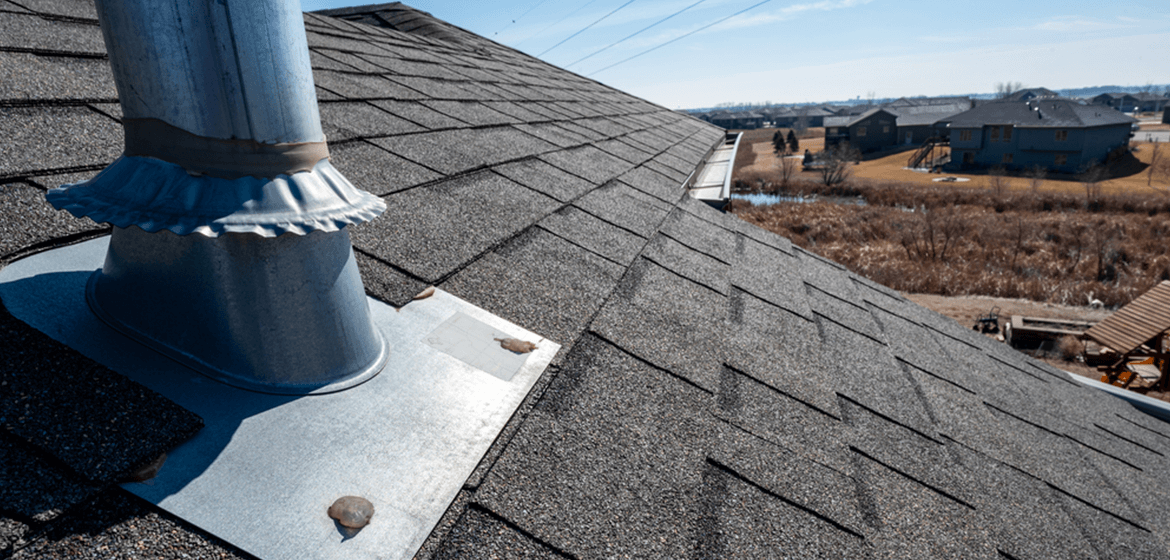
When it comes to maintaining the integrity of your roof, understanding the different roof flashing types is crucial for effective leak prevention. Roof flashing, typically made from galvanized steel, directs water away from critical areas of the roof. This blog post will explore the various types of roof flashing, their materials, installation techniques, and how they help prevent leaks.
What is Roof Flashing?
Roof flashing is a thin material, typically made from metal such as galvanized steel, aluminum, or copper, that professional roofers use to direct water away from critical areas on the roof. These areas are usually where the roof intersects with vertical surfaces like walls, dormers, chimneys, and skylights. Flashing acts as a barrier to prevent water from penetrating the roof’s structure at these vulnerable points.
Without proper flashing, water can seep into these junctions, leading to significant damage over time. This can include rotting of the roof deck, mold growth, and even structural damage to the building itself. Therefore, flashing is essential in ensuring a roof’s longevity and durability.
The Purpose of Roof Flashing
The primary purpose of roof flashing is to prevent water from entering the gaps and joints in a roof structure. By directing water away from these vulnerable areas, flashing helps to maintain the roof’s integrity and prolong its lifespan.
Water is a roof’s biggest enemy; without proper flashing, it can easily find its way into the smallest gaps and cause extensive damage. Flashing ensures water runs off the roof and into the gutters, rather than seeping into the roof deck and causing rot or leaks. Properly installed flashing acts as a protective shield, keeping the building’s roof and interior safe from water damage.
Flashing is especially critical around roof features like chimneys, vents, and skylights, where the roof surface is interrupted. These areas are more prone to leaks because they have more seams and joints that can potentially allow water ingress.
Types of Roof Flashing
- Continuous Flashing
Continuous flashing, also known as apron flashing, is a long piece of metal that carries water down to the shingles below. It acts much like an apron, covering the gap between the roof and the vertical surface. This type of flashing is particularly useful along the edges of the roof where it meets a vertical wall.
- Base Flashing
Base flashing is used in areas where the roof meets a vertical surface, such as around chimneys. This type of flashing involves two pieces to ensure that rainwater always meets a flashing surface as it travels downward. Base flashing is essential for areas that are difficult to flash with a single piece due to their shape or size.
- Counter Flashing
Counter flashing is installed opposite to or above the base flashing. It completes the protection by covering the top edge of the base flashing, ensuring that water does not slip behind it. This dual-layer approach provides robust protection against water infiltration.
- Step Flashing
Step flashing consists of a series of rectangular pieces of flashing bent at 90 degrees in the center. This type is used along walls where the roof meets a vertical surface. Each piece overlaps the next, creating a stepped effect that effectively directs water away from the wall and onto the roof.
- Skylight Flashing
Skylight flashing is designed specifically for skylights. Some skylights come with their own flashing, while others require custom flashing. Proper skylight flashing is essential to prevent leaks around these installations.
- Valley Flashing
Valley flashing is used in the valleys where two roof planes meet. This area is particularly prone to water accumulation, making it a critical spot for flashing. Valley flashing directs water down the roof and into the gutter system, preventing it from seeping into the roof deck.
- Drip Edges
Drip edge flashing is installed along the roof’s edges. It ensures that water runs off the roof without damaging the fascia or causing leaks. This type of flashing is crucial for protecting the roof’s edges from water damage.
- Kickout Flashing
Kickout flashing is used to direct water away from where the roof meets a wall and into the gutter. This type of flashing is essential for preventing water from running down the wall and causing damage to the exterior of the building.
- Roof Flashing Materials
The materials used for roof flashing play a significant role in its effectiveness and longevity. Here are the three most common materials:
- Aluminum Flashing
Aluminum flashing is lightweight and easy to work with. However, it needs to be coated if used with masonry or concrete, as plain aluminum can degrade when it comes into contact with alkaline surfaces.
- Copper Flashing
Copper flashing is highly durable and long-lasting. It is malleable and takes soldering well, making it a preferred choice for intricate flashing work. However, copper can discolor over time, which may be a consideration for some homeowners.
- Steel Flashing
Steel flashing, particularly galvanized steel, is the most popular choice due to its durability and corrosion resistance. It is also aesthetically pleasing and blends well with most roof types.
The Basics of Roof Flashing Installation
Proper installation of roof flashing is crucial for its effectiveness in preventing water damage. Here are some key techniques that ensure roof flashing performs its job correctly:
- Step Flashing Installation
Step flashing is ideal for areas where the roof meets a vertical surface, such as a wall or dormer. This method involves using small, rectangular pieces of flashing that overlap with the shingles. Each piece of step flashing is bent at a 90-degree angle and installed in a staggered pattern, creating a stepped effect. This design ensures that water flows away from the wall and onto the roof, where it can then run safely into the gutters.
The installation process starts by placing the first piece of flashing at the bottom edge of the roof-wall intersection, with one leg of the flashing extending onto the roof deck and the other running up the wall. A shingle is then placed over this piece, and the next piece of flashing is installed overlapping the previous one. This alternating pattern continues up the roof line, creating a watertight barrier that effectively channels water away from the vulnerable roof-wall junction.
- Plumbing Vent Boot Flashing
Plumbing vent boot flashing is designed to protect the areas around roof penetrations, such as plumbing vents. The boot is a cylindrical piece of flashing that fits snugly around the vent pipe. It features a flared base that sits over the shingles and a raised collar that extends up the pipe.
To install vent boot flashing, the roofer first cuts a hole in the shingles to accommodate the vent pipe. The flashing boot is then slipped over the pipe and positioned so that its base rests flat on the roof. The shingles are then replaced around the base of the boot, overlapping the lower edge to direct water away from the vent.
The top edge of the boot is sealed with roofing cement or caulk to ensure a watertight seal. This method ensures that water cannot seep into the roof deck around the vent pipe, protecting against leaks and water damage.
- Counter Flashing Installation
Counter flashing is commonly used around chimneys and other masonry structures. This technique involves two pieces of flashing: base flashing and counter flashing. The base flashing is installed at the roofline, extending up the chimney or masonry structure. The counter flashing is then embedded into the masonry above the base flashing and overlaps it.
To install counter flashing, the roofer first places the base flashing around the chimney, ensuring it is securely fastened and extends out onto the roof. Next, a groove or slot is cut into the mortar joints of the chimney. The counter flashing is then inserted into this groove and bent down to cover the top edge of the base flashing.
This two-piece system allows for the natural expansion and contraction of roofing and masonry materials without compromising the watertight seal. Counter flashing ensures that water is directed away from the chimney and does not seep behind the base flashing, which could lead to leaks and structural damage.
Nails vs. Sealant
The choice between nails and sealant is critical in roof flashing installation. Nails can securely fasten flashing, but if not used correctly, they can cause deformation. This deformation occurs because nails restrict the natural expansion and contraction of roofing materials with temperature changes, leading to potential warping and leaks.
Roofing cement, on the other hand, is often preferred for its ability to create a waterproof seal. It adheres the flashing to the roof surface, allowing for movement without compromising the seal. This flexibility helps to prevent warping and leaks, ensuring a longer-lasting and more effective flashing installation.
Using roofing cement also reduces the risk of water ingress at the points of attachment, maintaining the integrity of the roof’s protective barrier against moisture. Thus, while both nails and sealant have their uses, roofing cement is generally the better choice for preventing leaks and ensuring durability.
Protecting Your Roof with Proper Flashing
Proper roof flashing protects your roof from leaks and water damage. By directing water away from critical areas, flashing helps maintain the roof’s integrity and extends its lifespan. Choosing the right type of flashing is vital and ensuring it is installed correctly by a professional roofing contractor.
For homeowners in Dallas-Fort Worth, having a reliable roofing contractor like us at Dane Roofing, LLC, is crucial. We provide expert residential roofing and commercial roofing services, ensuring that your roof is well-protected and leak-free. Whether you need new roof installation, roof repair, or storm damage restoration, our experienced team is here to help.
Understanding and implementing the right roof flashing types is key to effective leak prevention and maintaining the longevity of your roof. With the right materials and installation techniques, you can protect your home from water damage and ensure a secure and durable roof. For expert roofing services in the Dallas-Fort Worth area, contact us at Dane Roofing, LLC, where we provide top-notch residential and commercial roofing solutions.

